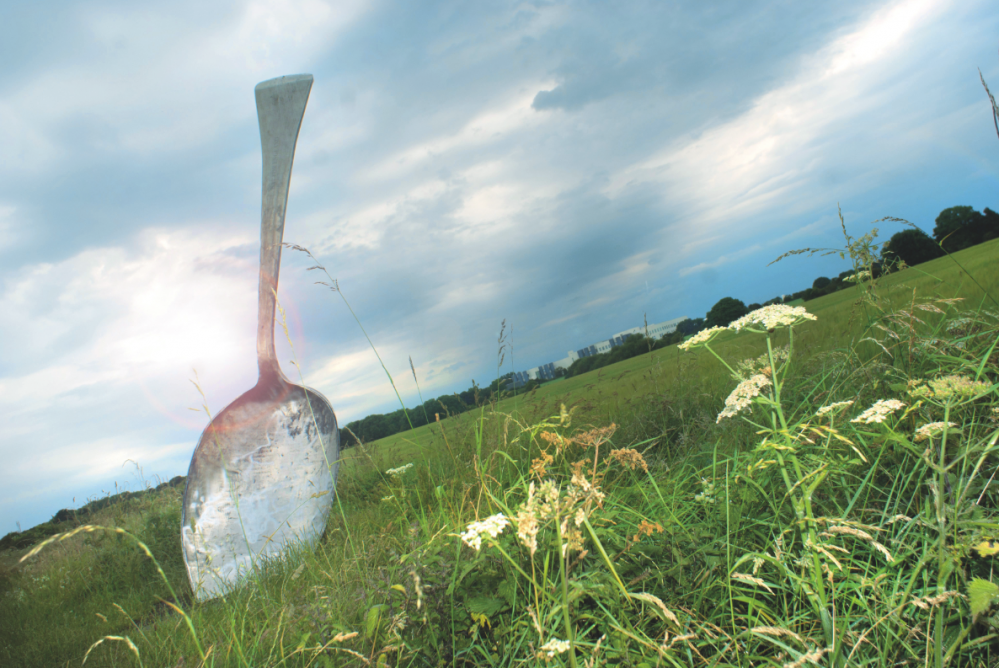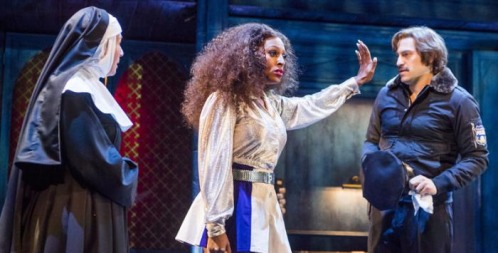The Coolest Public Art Sculptures and Where to Find Them in the North East

Rusty metal cows, engineering equipment and a giant spoon are just some of the weird, wonderful and exciting works of public art that have been deliberately placed off the region's beaten tracks
Yes that's right, there's an artistic revolution bubbling away in the North East, with a giant spoon in a field in Cramlington, an oversized claw hammer in the back streets of Middlesbrough and a 60m brick train in a Darlington industrial estate leading the charge. We don't want to spoil the fun, but we think it's about time more people knew about these incredible works. So, as September brings the promise of some actual late summer sun (here's hoping), grab your walking boots, pack your picnic and follow our hidden treasure hunt.

Eat For England
What is it? It’s known locally as the Cramlington Spoon because, well, it’s a 15ft metal spoon sticking out of the ground.
Where is it? It’s located between two farmers’ fields along a pathway between Cramlington and Seghill. You get to it via an underpass that is notoriously difficult to find.
Why is it there? It was commissioned in 2006 as part of a Lottery- funded art trail to entice more people into the countryside. Its creator Bob Budd believes that a place where food is produced is the best place for a giant spoon – and who are we to argue with that logic?
Beamish Shorthorns
What are they? Four metal cows welded from old tractor and JCB parts by sculptor Sally Matthews. Her workshop was an old train shed overlooking a field of rust-coloured shorthorns, which became her muse.
Where are they? You’ll find them on the Consett to Sunderland cycle route, near a railway bridge close to the entrance of Beamish Open Air Museum.
Why are they there? The sculpture is one of many commissioned by cycle charity Sustrans to create iconic images for cycleway users – so get on your bike see them for yourself.
Giant Tools
What are they? Again, fairly self-explanatory: oversized toolbox staples, comprising a hammer, and a square and pencil, created by local sculptor Andrew McKeown.
Where are they? They are dotted around the industrial estates of Middlesbrough, so tracking them down is a commitment, but certainly worth the effort.
Why are they there? They were commissioned in 2012 by Middlesbrough Council and Groundwork North East to both celebrate the area’s industrial past and enhance the local industrial estates.

Brick Train
What is it? It’s a train made of bricks – 185,000 of them to be precise. It took 34 labourers 21 weeks to build the train, which is 130ft long, 23ft high and weighs 15,000 tonnes.
Where is it? The train, which was created by Scottish sculptor David Mach, is located in Morton Park Industrial Estate, in Darlington.
Why is it there? It was commissioned in 1997 to celebrate Darlington’s rich industrial heritage and is based on the famous 1938 steam locomotive, The Mallard. Usefully, it sits right next to a supermarket, so you can combine viewing it with the weekly shop.
The Grass Seemed Darker Than Ever
What is it? A new art installation by Fiona Curran featuring over 350 individually painted fence palings, encircling a section of woodland which has been painted black.
Where is it? Head to Kielder Water & Forest Park and you’ll find it a few hundred metres from Kielder Castle.
Why is it there? A walk around Kielder is literally a journey of discovery – it’s littered with exciting hidden art and architecture, including the giant wooden head, Silvas Capitalis, or the striking Janus Chairs.
Terris Novalis
What is it? A stainless steel theodolite (a surveying instrument) and an engineer’s level, 20 times larger than the originals, created by Turner Prize-winning artist Tony Cragg.
Where is it? The sculpture is a prominent landmark on the Coast to Coast cycle route near Consett, on the old Stanhope and Tyne Railway line, at the site of what was once Europe’s largest steelworks.
Why is it there? It is another of the Sustrans- commissioned pieces, and was installed in 1996. Terris Novalis – which means ‘new made land’ – is a stunning memorial to the steelworkers of County Durham, which you really should make the time to visit.






